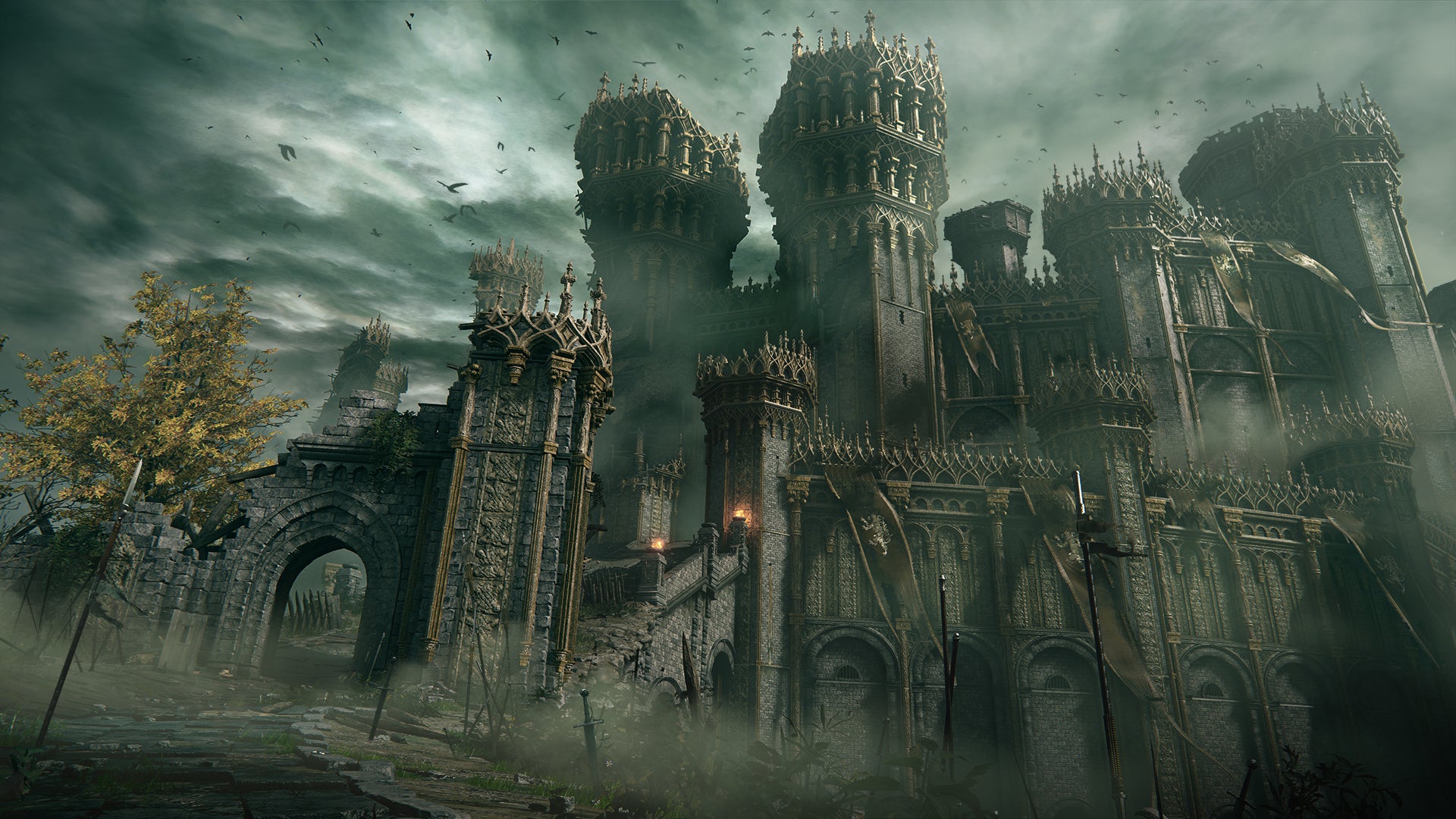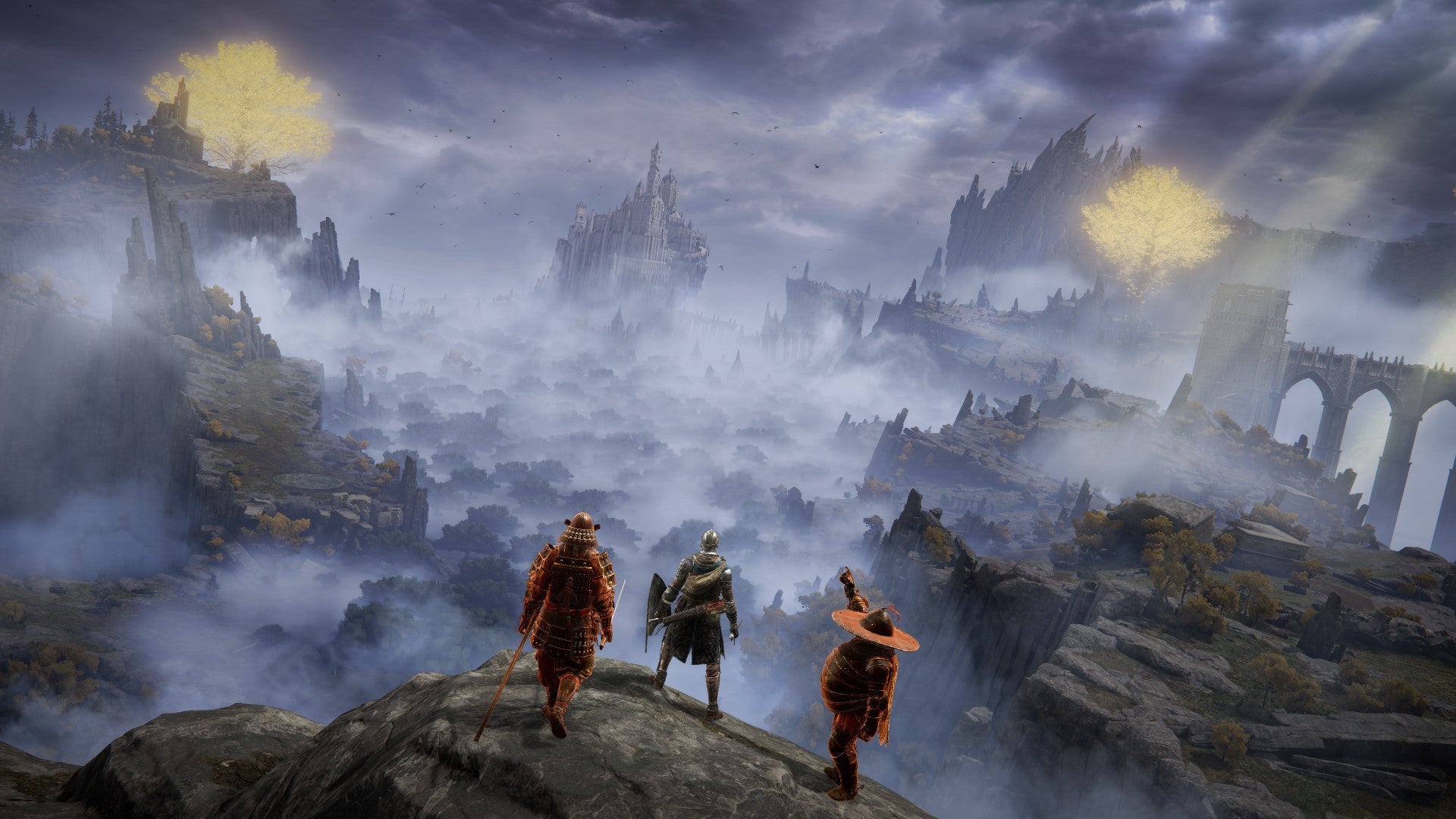For three days last week, I practically waltzed over to my friend’s PS5 (that I, err, ‘borrowed’, as sadly Elden Ring’s closed network test isn’t available on PC this time around). If you applied for the CNT and got selected, you’ll be able to experience everything I’m about to tell you for yourself starting this Friday, November 12th, until Monday November 15th. But even though my hands-on with Elden Ring was brief, I’m confident that this is Souls taking a step in the right direction. It’s at once new and familiar, but forever exciting. I want to go back. Since I was playing the game on PS5, I can’t vouch for how it’ll run on our rigs, but what I saw made me do a big gleeful bellow. Even at this early stage, Elden Ring ran beautifully, with very few hitches and frame rate dips on my 1080p TV. Without the aid of a dedicated frame rate counter, it looked pretty close to 60fps by my best guesstimate, so it should feel pretty similar to what we can expect from the PC version when the game launches in full next year. So let’s set the scene, Tarnished. I got to explore the majority of Elden Ring’s opening zone, Limgrave. Aside from the test barricading off certain portions of the wider game with invisi-walls, I had free rein. I could explore catacombs, level up, try out co-op, horse about; the lot. Stormveil Castle that loomed on the horizon? Yeah, I could even take on a main boss there. Bliss, I tell you. Bliss. Anyway, without further ado, let’s dig in. Character creation wasn’t available in this early build, so we had a choice between five preset classes instead. I opted for Prophet, mainly because I wanted to test out the magic, and because they’d paired a wooden wheel scarf with a blonde bowl cut. Others like Bloody Wolf and Enchanted Knight were available too, each with different stats, starting weapons, and the like. And right from very first tweak of the thumbsticks, Elden Ring felt familiar. It’s a Souls game alright and feels like it’s been built from the bones of Dark Souls 3. You chug the equivalent of Estus to replenish your health, you’ve got that diamond shaped HUD at the bottom left of your screen, you’ve got the health bar resting atop a green stamina bar. Come full release, combat will likely take on many forms, but at a base level, this has the rhythm and cadence of Souls too; this definitely isn’t Sekiro or Bloodborne. This isn’t to say that Elden Ring is recycled Souls. Far from it. Stepping into its world for the first time conjured up a swell of excitement only The Elder Scrolls: Oblivion and The Legend Of Zelda: Breath Of The Wild have drawn out of me. Immediately you’ll pan to the golden tree towering in the sky and look out across the green hills and realise that this is ambitious. It’s not like past Souls games aren’t home to vast spaces and interlocking open-ish worlds, but survival often demands you hold your breath and squint in the dark for the next bonfire. Here, there’s room to breathe. This is made all the more apparent by the breeze, which wafts over Graces (your bonfire equivalents) and leaves these sparkling gold trails that hint at another’s location. You can rest at these to replenish health reserves, restock supplies, but also new stuff! Like shift the day/night cycle or equip Ashes of War, both of which I’ll touch on in a bit. From this first area at least, what jumped out at me is the difference in how Elden Ring’s open world might be structured compared to previous Souls entries. Limgrave reminds me of a wonky spider diagram. At its centre is a gorgeous landscape pocked with points of interest. Encampments bristle with enemies and fallen ruins play host to giant bats. An army of enormous crabs crash around boggy marshland. Twin giants drag a wagon filled with loot, as a procession of wiry undead follow behind. Not to worry, friendly-ish NPCs dot the place as well. One warrior wearing a funny helmet warned me of a nearby dragon. Another shady sorcerer hoped I’d go and die in a ditch somewhere. As ever, they ooze character. Much like Breath Of The Wild, your map in Elden Ring starts off as a black abyss which you’ll bring to life over the course of the game by finding Map Fragments. I stumbled into Limgrave’s fragment in a large encampment of undead soldiers. Upon picking it up, the region of Limgrave sprung to life in this wonderful hand-drawn style. I also got a sense of how big the game’s map could be. Limgrave felt pretty vast for a starting zone, so it makes you wonder, just how sweeping will they get as you progress? Branch off from Limgrave’s expansive central avenues, though, and the game constricts. In these moments, there’s this sense the game transitions from free roaming Elden Ring to linear, classic Souls. Perhaps a better way to put this, would be that Elden Ring draws from its locker of Souls greatest hits. Even early on, it’s clear that the game doesn’t lose sight of its history. For instance, I stumbled into this cave entrance tucked away at the edge of a field. As I descended, the atmosphere changed. That Elden Ring expanse curled up into claustrophobic Souls, with the bright outside giving way to a dark, cold interior. I’d arrived in a set of catacombs, with tight corridors and thick metal doors sealing them closed. Walls belched flame and little stone goblins jumped down from ledges. After a bit of rummaging, I’d pulled a lever which led to an optional boss fight with what can only be described as a large statue of a dog with a sword. It was nowhere near as cavernous as the Catacombs from Dark Souls, but certainly felt like a taste of what’s to come. The way Limgrave is stitched together also affects how things are paced. Souls often funnels you into areas where you’re forced to inch forwards, checking corners and pulling levers; it’s one hesitant crawl through a series of tunnels. My time in Limgrave couldn’t have been more different. This isn’t a barren world, but more of a curated collection of meaningful things separated nicely. There’s a genuine sense of discovery, of “Oh fuck me, what is THAT?!” Perhaps unsurprisingly, more often than not, I learned that whatever it is wants to kill you. You have space to scope out the crabs and the wagons. In this way, the game moved as fast as I wanted it to. It was only when I ventured up to Stormveil Castle where this changed. The journey to the castle was spectacular, to say the least. A fellow journalist and I ventured up this snaking path together. As we ascended, a violent storm rolled in, which obscured our vision and made the flora around us whip to and fro. Once we’d dealt with wolf ambushes and guard patrols, we encountered the boss of the demo. And hoo boy, did we have a time. A good time at that. This was a towering fella with a West Country accent, a gnarled staff, and a chip on his shoulder. Even with two of us, it took many, many attempts to defeat him. He was a typical Souls boss, with signposted attacks that hit HARD. Never unfair, but always dirty in his tactics. Take him down to half health and he whips out a lightning hammer, a lightning sword, and lightning daggers. We managed to fell him with magic, which felt a bit cheesy and a touch repetitive. Still, the tension was unbearable and the triumph incredible. Downed bosses offer you Runes to spend, but also Ashes Of War. At Graces, you can attach these to weapons and they’ll augment them with cool abilities. I slapped the one from lightning man onto my club and it electrified it! Not only that, but it granted me the ability to call down a lightning strike on nearby enemies. I liked that I could pilfer bosses’ signature moves straight away, as opposed to getting lumped with an expensive crafting material like in previous Souls games. From then on, we delved into the castle. The test wouldn’t let us go much further in, so we only got a little taster of its intricate innards. Again, it was very Souls. Ladders and ledges. Fire bombs and dark rooms. Glorious, though, just glorious. In the end, my only gripe was not knowing where I stood in relation to the enemies in Limgrave. I wasn’t sure if I was overlevelled or underlevelled, or what, really. But maybe I can delve into this more another time. There’s so much more to say about my Elden Ring appetiser, but I can’t keep you forever. I’m sure I’ve also missed a lot of things, but I hope that I’ve at least given you a sense of what it’s like to play in those early hours and how it compares to old Souls. Stay tuned for more impressions, but if there’s one thing I leave with you today, it’s this: Elden Ring is bold and ambitious, but knows its limits. As a result, we may be in for an open world that actually pushes the boundaries for once.



